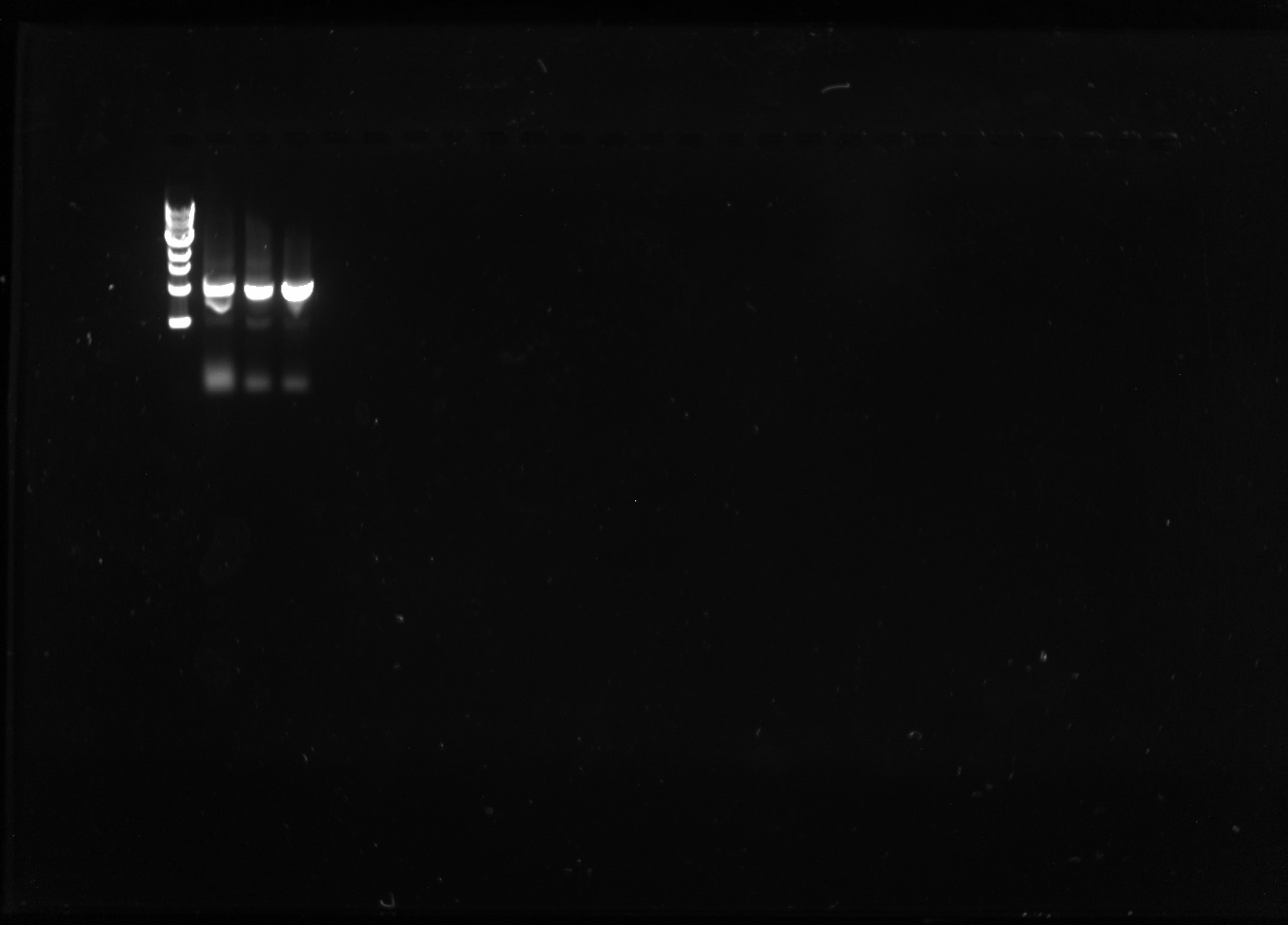Difference between revisions of "Team:UCLA/Notebook/Honeybee Silk/30 May 2015"
(→Gel Visualization of 5/26 PCR) |
|||
| Line 291: | Line 291: | ||
The PCR products from 5/26 were run on a 1% agarose gel against a 1kB ladder. I used 5 uL of each sample and added 1uL of loading dye. | The PCR products from 5/26 were run on a 1% agarose gel against a 1kB ladder. I used 5 uL of each sample and added 1uL of loading dye. | ||
| − | + | [[File:2015-05-26 gel.jpg|none|thumb|500px|Gel Image]] | |
| + | |||
| Line 297: | Line 298: | ||
There were bands present for the correct base pair length (~1000bp). The sample run at 67C for the annealing step produced the cleanest, brightest band. | There were bands present for the correct base pair length (~1000bp). The sample run at 67C for the annealing step produced the cleanest, brightest band. | ||
| − | |||
='''PCR of Honeybee G-block (Optimal)'''= | ='''PCR of Honeybee G-block (Optimal)'''= | ||
Latest revision as of 22:32, 16 July 2015
Contents
Gel Visualization of 5/26 PCR
The PCR products from 5/26 were run on a 1% agarose gel against a 1kB ladder. I used 5 uL of each sample and added 1uL of loading dye.
Results:
There were bands present for the correct base pair length (~1000bp). The sample run at 67C for the annealing step produced the cleanest, brightest band.
PCR of Honeybee G-block (Optimal)
From the gel visualization, 67C annealing temperature produced the best results. I am running a 50uL PCR reaction now under the optimal conditions.
| Component | Volume (out of 50uL) |
|---|---|
| 5X Q5 Reaction Buffer | 10uL |
| 10mM dNTPS | 1uL |
| 10mM primer 10 | 2.5uL |
| 10mM primer 11 | 2.5uL |
| Template (Honeybee G-block) | 1uL |
| Q5 High Fidelity DNA Polymerase | 0.5uL |
| Nuclease Free Water | 32.5uL |
Program
| Step | Temperature | Time |
|---|---|---|
| Initial Denaturation | 98C | 30s |
| Cycles (x25) | 98C | 10s |
| Annealing | 67C | 20s |
| Extension | 72C | 30s |
| Final Extension | 72C | 2min |
| Hold | 12C | Hold |
Purification of PCR product
I purified my PCR product using Qiagen MinElute columns, following their protocol.
OD: 349.18ng/uL
